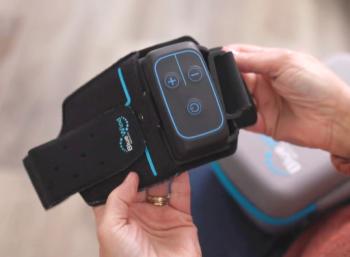
ACP panel offers tips for easing difficult discussions with patients
Physicians sometimes are reluctant to discuss controversial subjects with their patients. But these discussions become easier, and often produce better outcomes, when physicians explain why they are bringing up the subject, and try to understand the patient’s perspective on it.
Physicians sometimes are reluctant to
Related:
These were among the conclusions to emerge from the session, “Communicating with Patients about Potentially Controversial Topics” at the
The session was moderated by Carrie Horwitch, MD, FACP, clinical associate professor at Virginia Mason Medical Center in Seattle, Washington.
Gun ownership
Regarding gun ownership, Norcott cited a 2013 ACP study to illustrate doctors’ hesitancy to bring up the topic with patients. The survey found that 85% of respondents felt that firearms was a public health issue. But 58% had never asked about the subject, and 77% had never discussed ways of reducing gun injuries or deaths.
The survey also found that 66% of patients think it’s appropriate for their doctors to talk about firearm safety. That compares to 81% who think use of seatbelts is acceptable as a topic.
“When you’re talking to patients about firearms safety, be respectful and really individualize your counseling,” Norcott advised. “Provide context, and explain why you’re bringing the subject up. Is it because you’re concerned about self-harm, or because there are children in the home? Providing the patient with that background information is very helpful.”
Related:
It’s also important to respect the patient’s autonomy and concerns about privacy. Even though all discussions are protected as part of the doctor-patient relationship, “we shouldn’t push patients to discuss the topic if they don’t want to.”
Norcott urged audience members to take patients’ individual circumstances into account when discussing gun safety. She noted that storage and safety requirements would be different for someone who owns a gun for hunting than for the person who carries a gun for their job. “Try to work with the patient to meet their needs,” she said.
Medical mistakes
The second role-play concerned a patient admitted to a hospital with a heart attack, in which the treating physician discovered that the patient had been misdiagnosed following a recent emergency department admission for chest pain. It was designed to explore the ethics of apologizing or accepting responsibility for an error on behalf of a colleague.
Hot topic:
In the discussion that followed, Norcott and Pendharkar, along with many in the audience, agreed that it’s usually wrong-and counterproductive-for a hospital system to blame one individual for a medical error.
“There’s no way that a given outcome can be shouldered by one individual,” Norcott said. “Even in ordering a lab, someone is doing the draw and there are other people who see it. So there are multiple opportunities [for spotting errors].”
Pendharkar noted that the ACP’s ethics manual requires doctors to disclose information about errors to patients, and that, according to the manual, “errors do not necessarily constitute improper, negligent or unethical behavior but failure to disclose them may.”
“Most patients would appreciate full disclosure regarding any errors,” she added.
Regardless of who’s responsible for an error, a physician’s willingness to disclose and discuss it will often depend on their rapport with the patient. From that perspective, Pendharkar said, primary care doctors often have an advantage because, unlike hospitalists or specialists, they can develop the kind of long-term relationship that fosters trust and open communication.
On the other hand, she acknowledged, an institutional culture of finger-pointing and concern over possible malpractice suits and can often act as powerful barriers to revealing medical errors, even if the doctor revealing the error isn’t responsible for it.
In cases where discussing errors is an option, Horwitch advised beginning by expressing regret that an error has occurred regarding the patient’s diagnosis or treatment. “If you can, describe the course of events using patient-friendly, non-technical language to describe the nature of the mistake, what the consequences are, and what corrective actions you might take in your own organization,” she added. “Elicit any questions or concerns from patient, and plan the next step for the patient, maybe in conjunction with the patient safety advocate or other appropriate person in the organization.”
Pendharkar emphasized the importance of identifying any systemic weaknesses that led to the error, and discussing these with administrators. “If providers don’t speak up and share with administration what they’re experiencing then it’s never going to get bumped up to the level where things can be changed,” she said.
Newsletter
Stay informed and empowered with Medical Economics enewsletter, delivering expert insights, financial strategies, practice management tips and technology trends — tailored for today’s physicians.














